
Growing apple trees on the farm or in the home garden has been a tradition in our country since the 1660s, when Europeans began settling North America. Founded in 1866, Gurney's Seed and Nursery Co. has a long history of working with the finest apple breeding programs in the nation. And when selecting apple varieties for our customers to grow, we consider a variety of criteria, including flavor, ease of growing and disease resistance.
The varieties of apple trees available to grow are numerous. We have whittled down our list to some of the finest, most delicious apples the home gardener can grow. When buying apple trees, there are a few factors to consider before selecting an apple variety for your yard or garden.
Pick the right apple for your plans
Are you planting an apple tree solely to have apples for fresh eating? Do you want to cook with them? Would you like to store apples away for the winter? Do you want to be totally hands off after planting the tree and need a variety with great disease resistance? As you can see, personal preferences and the fruits' final use play a role in deciding what to choose. Once you have decided which variety suits your needs, then you need to make sure it will grow in your region. After those decisions are made, you may need to choose another variety for cross-pollination. The final consideration is whether you want a standard (full-sized) apple tree or a dwarf apple tree.
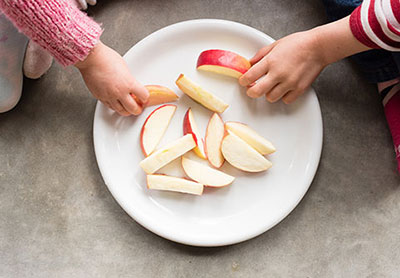
Fresh Eating

Cider Making
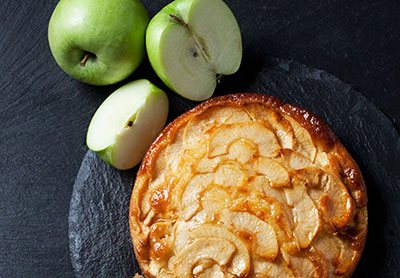
Baking
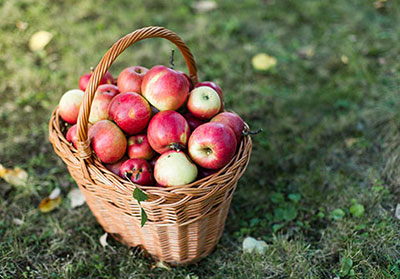
Winter Storing
Which apple varieties grow in my zone?
Most of the fruiting trees offered by Gurney's can be grown throughout much of the United States. However, there are a few issues to keep in mind, especially if you live in an extreme Northern climate or in a warm winter area. All fruit trees need a certain number of chill hours. Chill hours are the number of hours that the temperature stays at 32-45°F. Chill hours start accumulating once your tree goes dormant in the fall. Most of the United States receives at least 800-1,000 hours of chill. As you get into the South, the Southwest and some parts of coastal California, chill hours decrease, and variety selection becomes more important. In the very deep South, choices become even more limited.
If the fruiting tree does not receive the correct amount of chill, it may not bloom or even leaf out in the spring. For several varieties, however, chill hours are not written in stone. Many people report having had success in low chill areas with varieties that were thought to have higher chill requirements. While we do not include chilling hours within our product descriptions, you can use the hardiness zone information that follows each description to determine whether a tree will thrive in your area. The higher the hardiness zone rating, the less amount of chill is needed. For example, a tree that is rated zone 7 or 8 will need less chill than one listed for zone 4 or 5.
Also pay attention to the harvest date in the product description. If you are in Minnesota and the description has a late October harvest date, this might not be the best apple for your area.
How do apple trees cross-pollinate?
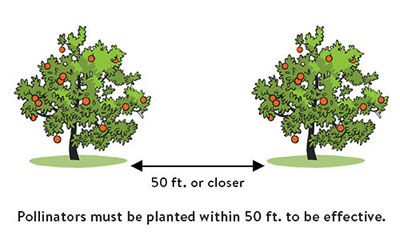
To ensure fruit set, most apple trees need to be cross-pollinated by another variety. Apple varieties are placed in flowering groups based on their flowering time. However, not all varieties can cross-pollinate each other even if they are blooming at the same time. We recommend you refer to Gurney's Pollinator and Rootstock Chart to pick varieties that will cross-pollinate. The nearest pollinator should be at least 50 feet or closer. The benefits of growing two or more varieties go beyond pollination. You can extend your apple harvest by planting apple trees with different harvest windows. When in doubt, it is always good to plant a crab apple tree because they can pollinate a wide range of apple varieties. Even better, you may already have a crab apple growing in your yard.
Should I buy a standard or a dwarf apple tree?
Rootstock are what your favorite apples are grafted or budded on to help control size. There are three general categories of rootstock based on how they affect tree size: dwarf, semi-dwarf and standard (full-sized). Gurney's offers apple varieties on standard and dwarf. Selecting a rootstock depends on your available space and ability to maintain the apple tree. Standard trees grow 15-25 feet and our Reachables® dwarf trees top out at 6-8 feet tall.
The particular rootstock we chose for standard apple trees offers many advantages. They develop a very strong and vigorous root system. This helps them tolerate drought conditions and provides a strong anchor for the top growth. Our standard trees are the best rootstock for clay-soil conditions and are resistant to soil pests and blights. Compared to dwarf trees, standard trees take a few more years to produce fruit but once they do, production is very high. Standard trees are also very long lived. In fact, there are a few trees scattered around the country that are 200 years old or older.
Gurney's dwarf apple trees, marketed under the Reachables brand, also have many advantages for the home gardener. Reachables branded apple trees produce full-sized leaves and fruits, but on a smaller tree. That makes it easier to fit into your garden, orchard or even a container. The small size allows you to plant several apple trees in the same amount of space as one standard apple tree. Reachables are also easier to manage than standard trees. One person can prune, spray, net and harvest the tree—all while standing on the ground. They also start to bear fruit much sooner than standard trees, sometimes in their second year after planting. Since Reachables produce full-sized fruit on a small tree, a tree support is required.
Once you order from Gurney's, homegrown apples are only a few years away, and the tree that bears them can last you a lifetime!
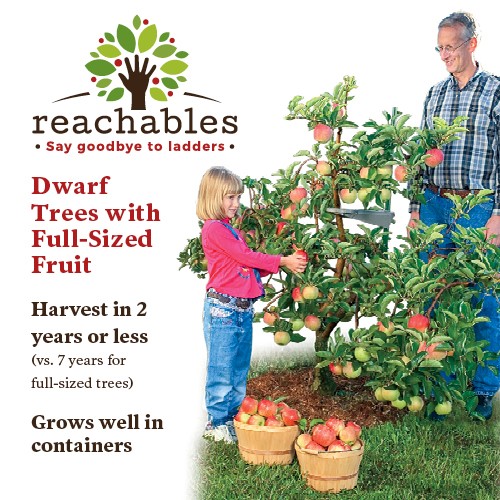
Reachables are easy to grow
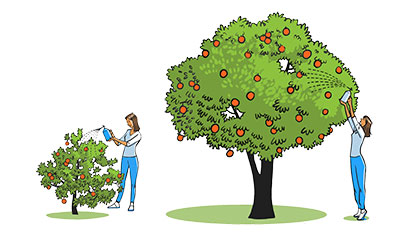
Easily cared for by one person
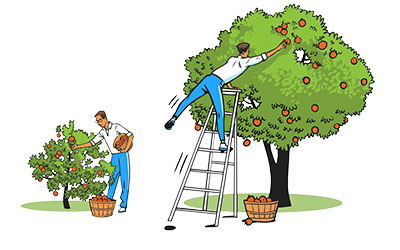
No ladders required
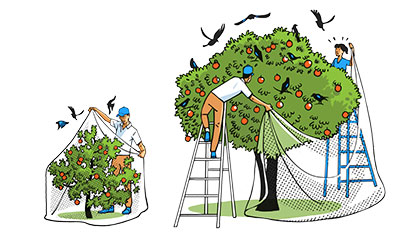
Easily netted by one person





 Gardens Alive! & Supplies
Gardens Alive! & Supplies






